What does our community need?

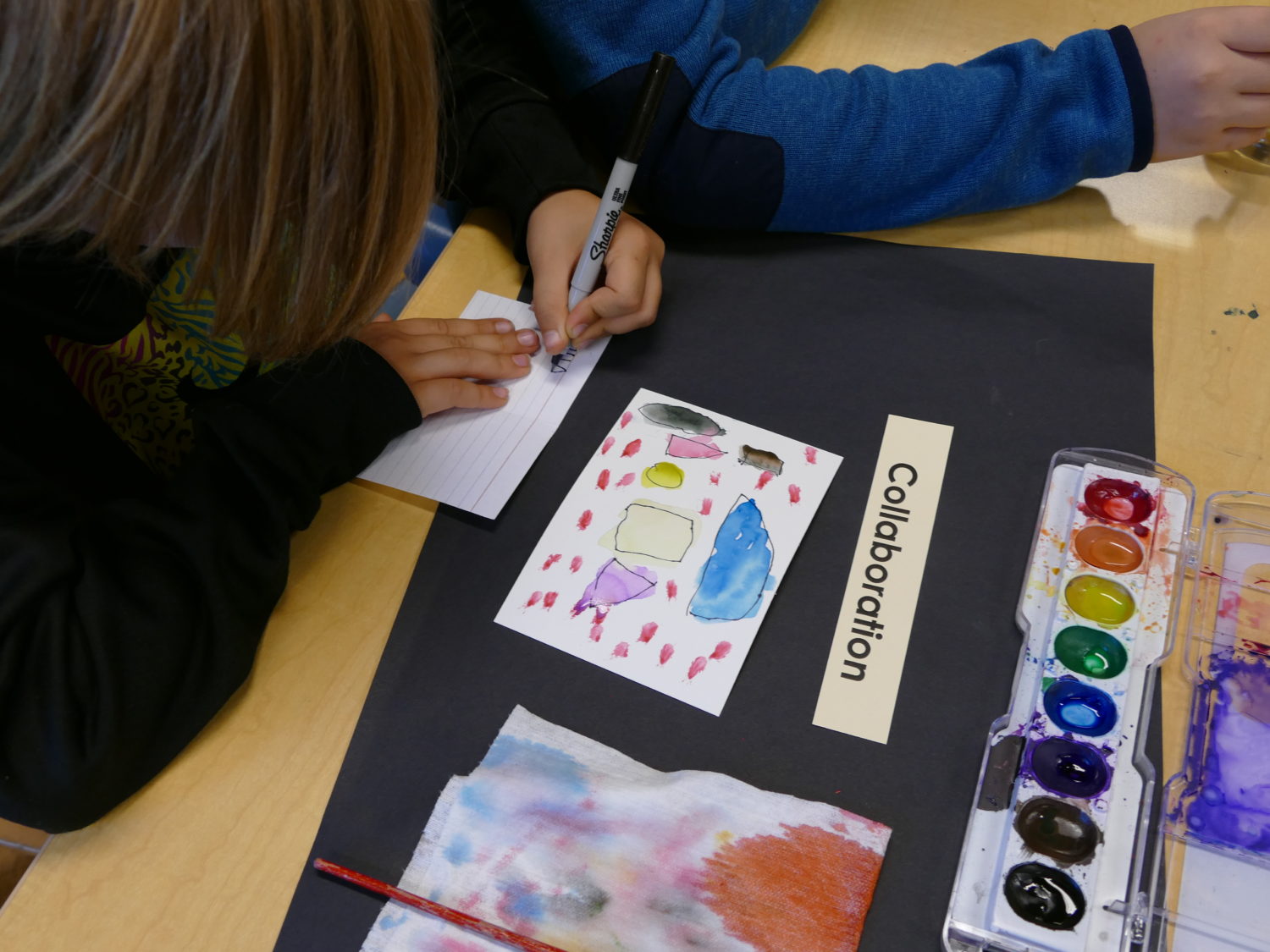 Every new year is a new beginning. Each time a group of students and teachers come together in September, they become a learning community. What that looks like, feels like, and sounds like depends on the specific children and teachers that make up that learning community. No two communities are exactly the same because they all hold the pieces that make up the whole.
Every new year is a new beginning. Each time a group of students and teachers come together in September, they become a learning community. What that looks like, feels like, and sounds like depends on the specific children and teachers that make up that learning community. No two communities are exactly the same because they all hold the pieces that make up the whole.
The first few weeks of a community’s time together is spent playing and exploring each other, their environment, and everything in between. The shared experiences, time, and space is present as the children ponder together:
What ingredients live inside this community?
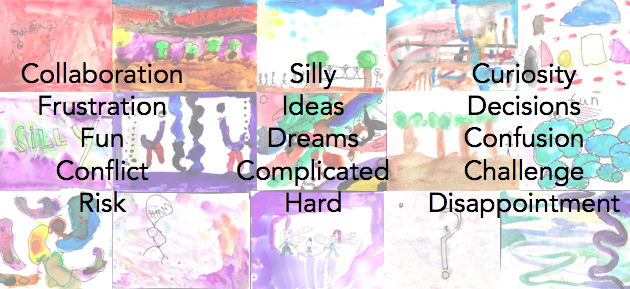
Words this group of third-grade children thought of during play and conversation were given back to them to “crack open” with watercolor imagery. The materials not only supported individual children to consider what lives inside that word from their point of view, but also supports other children to see what they see there. As the children’s own meanings are negotiated and constructed together through the sharing of words and images — what lives in a community becomes what we hope will live in our community.
The classroom environment at the beginning of a new school year is designed by the teachers based on their schema around the age group that will occupy the space, as well as what they might already know about the incoming class. The teachers created a welcoming environment that they hope will support the learners that will soon come, knowing that things might change based on the needs of that particular learning group.
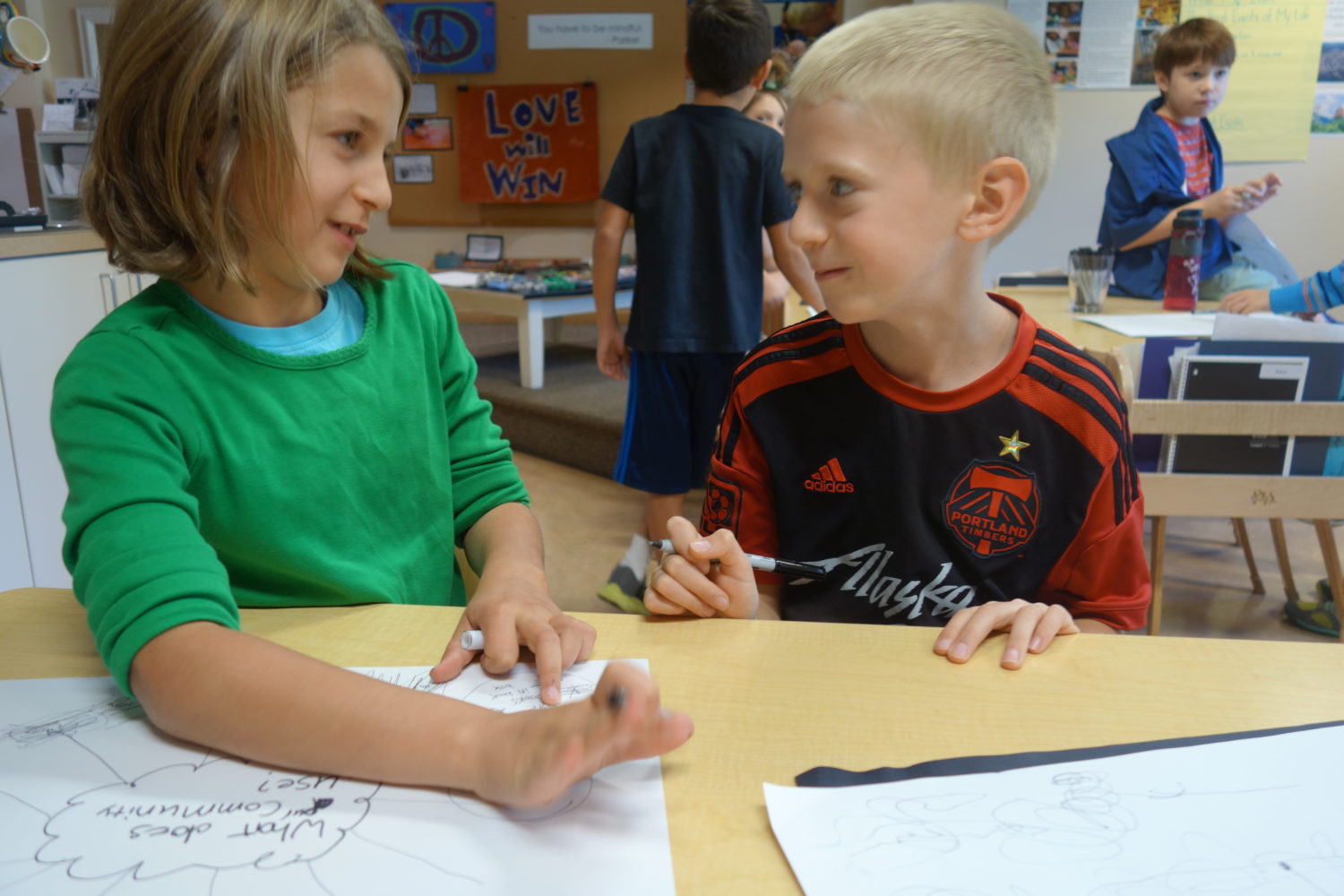
Considering the ingredients that make up their community (so far), we asked the children,
What does your community – the environment, as well as everyone in it – need?

The children followed a simplified design protocol, inspired by the Stanford d.school and Cooper Hewitt – Smithsonian Design Museum, that invited problem-solving strategies, collaboration, thinking through design, and designing through empathy. They created prototypes, a rough physical sample, with limited supplies that demonstrated how their idea could function in the new space that they now occupy together.
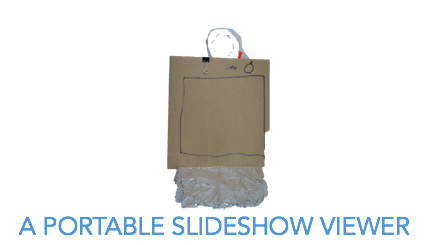
Michael and Kevin’s design is a portable slideshow viewer that shows the work that we do in the form of a slideshow. The designers believe that the classroom community needs this because it helps you see and be reminded of your work, as well as the handiness of the portability so that your documentation can go where you go.
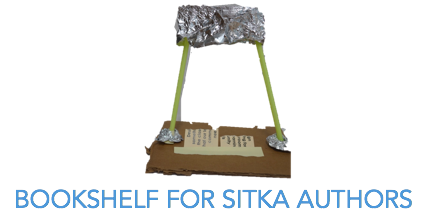
Skye and Logan created a bookshelf just for books and other writing by the authors that live in the classroom community. They believe that it is important to share what they write and create with others and that the community (and everyone who visits) needs to read and celebrate these authors, just like the ones that occupy our classroom library.
Other prototypes included a soft, quiet corner with a canopy for a calm place to be; a class pet that could help with responsibility, patience, and spreading love; a “water bottle opera” that created a personal space for each child and their belongings (with also honoring their imagination and stories); and a map of the classroom that could empower everyone to know where everything belonged and would help the children take ownership of the classroom and everything within. In their designs, as well as in the work and thought they put into the designs, the children were expressing their need for safety, comfort, imagination, stories, and celebration. They were showing us that they know their ideas and stories are important and they want a classroom that reflects that. They were also showing us that they are concerned with the safety and comfort that met them when they entered the space and wanted that same safety and comfort for their whole community. Through collaboration, design, creativity, and reflection, the children were able to add all our community “ingredients” into our learning community while making room for more to come as we continue building a space where we all want to be.
Reader, what ways are you inviting your learning community to think and design for meaning and empathy?
